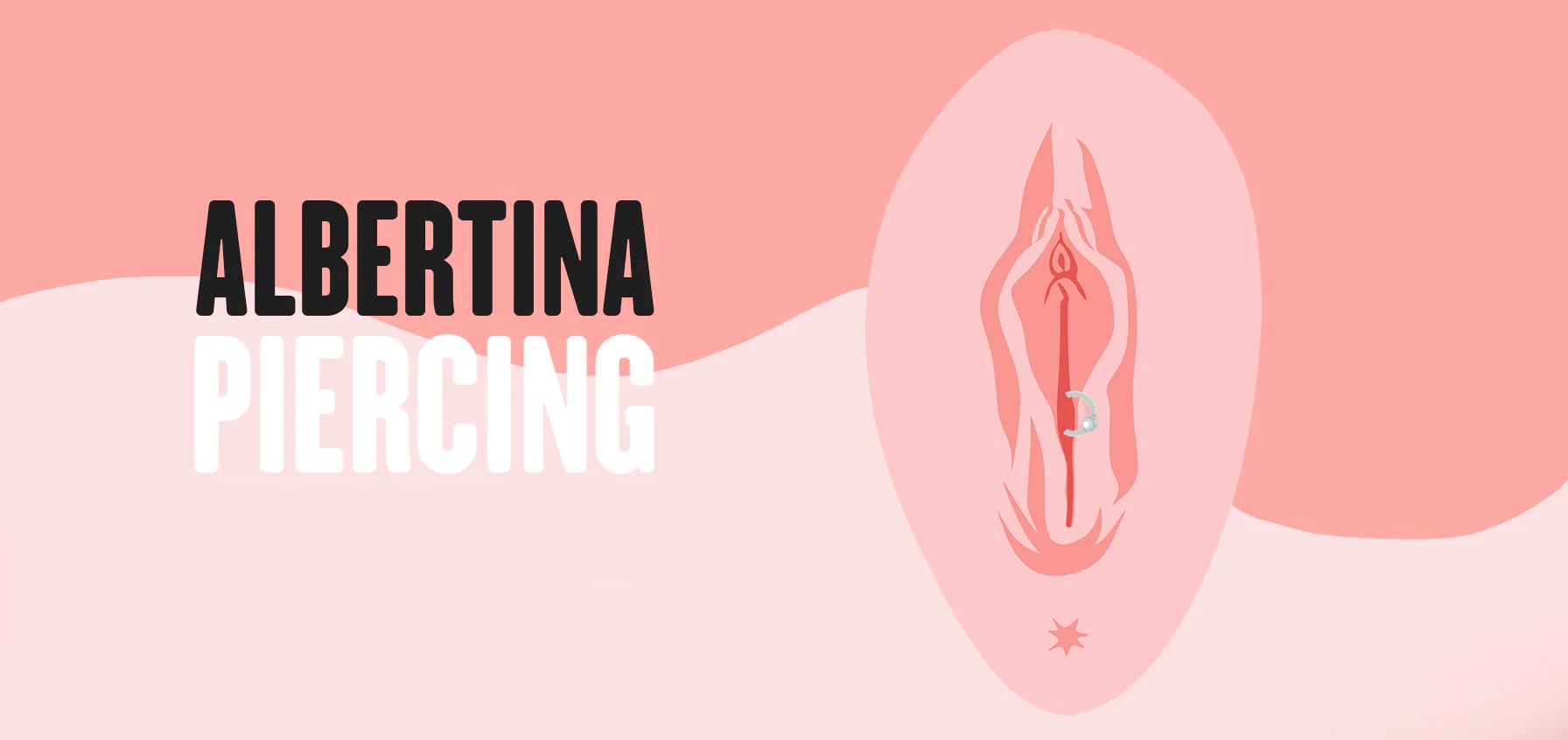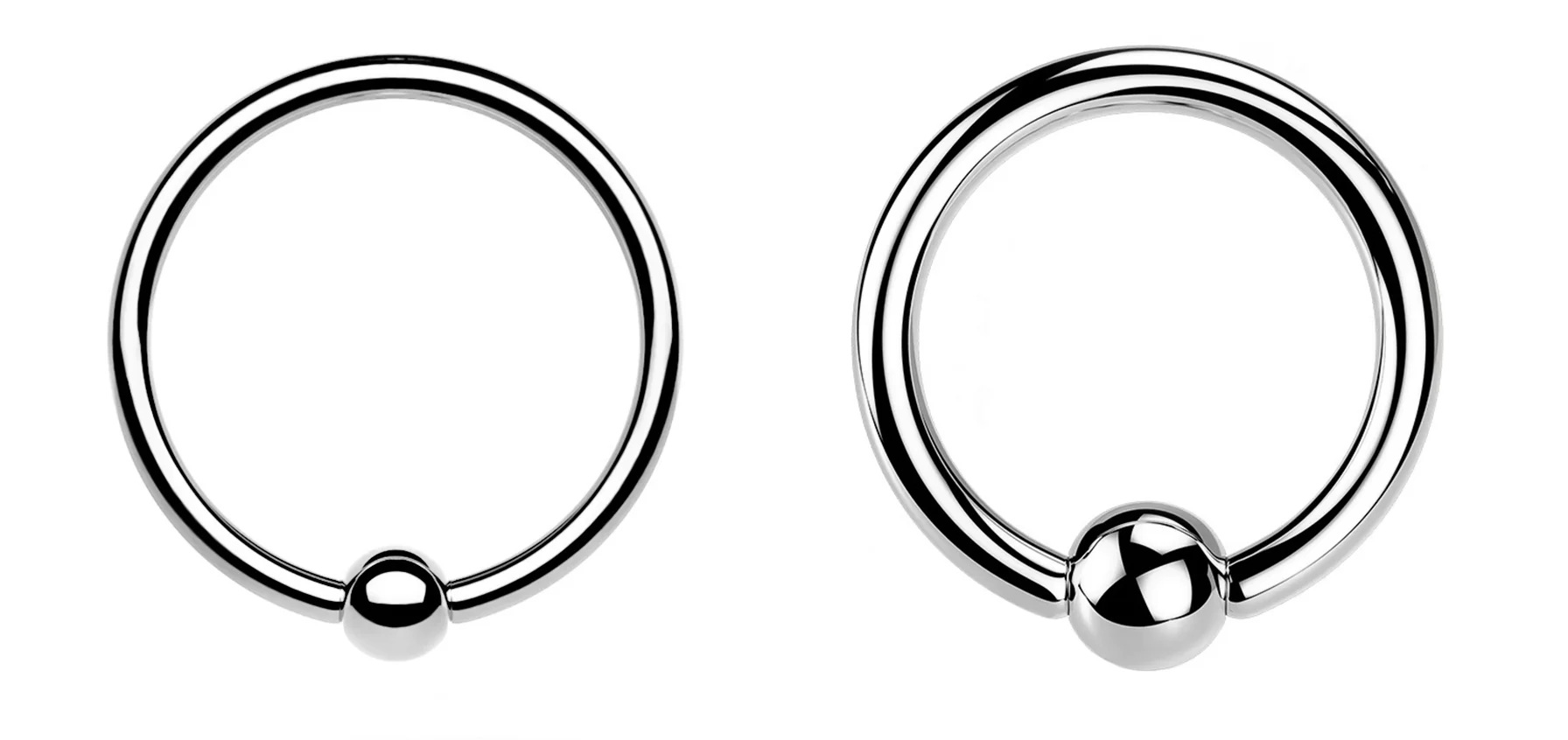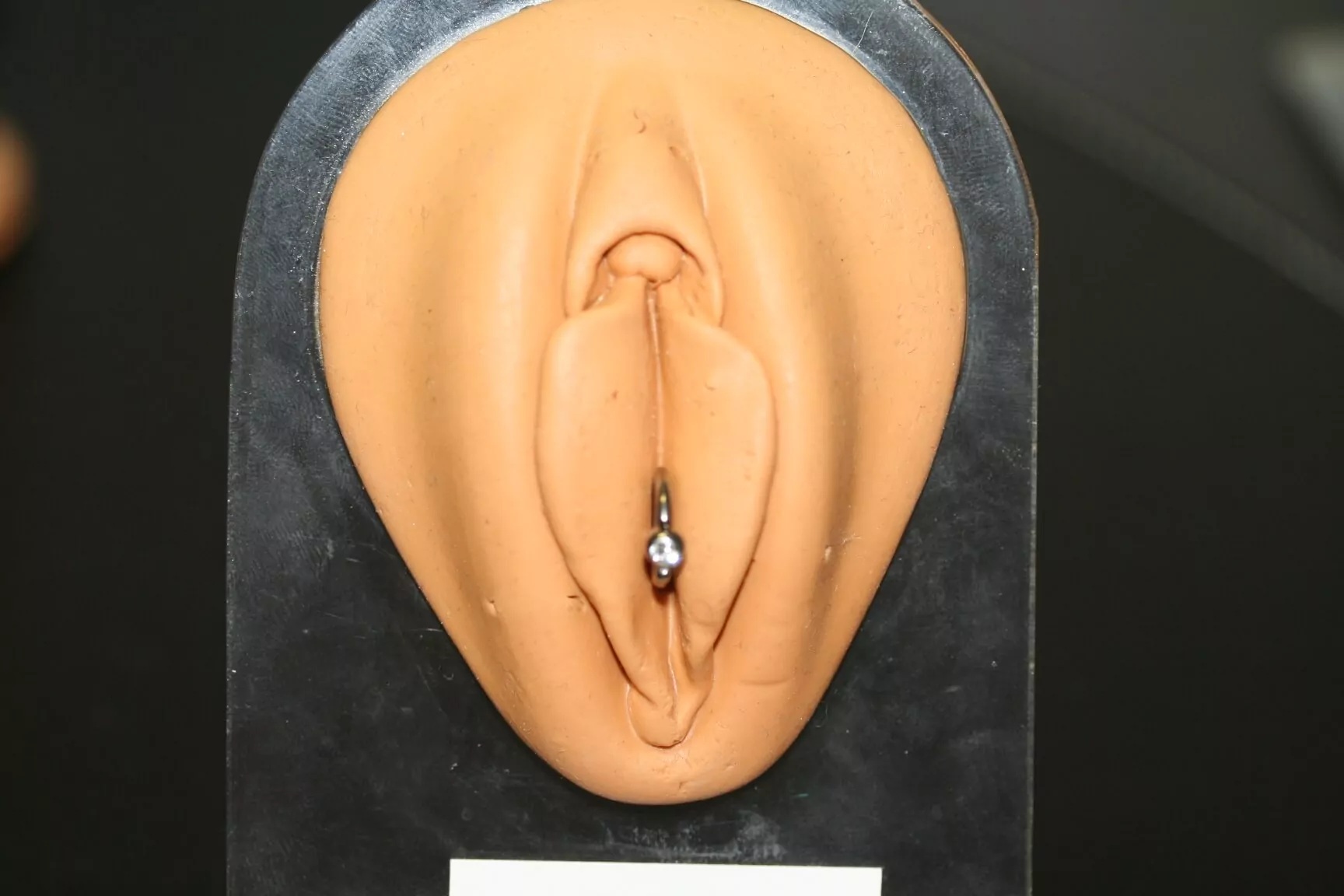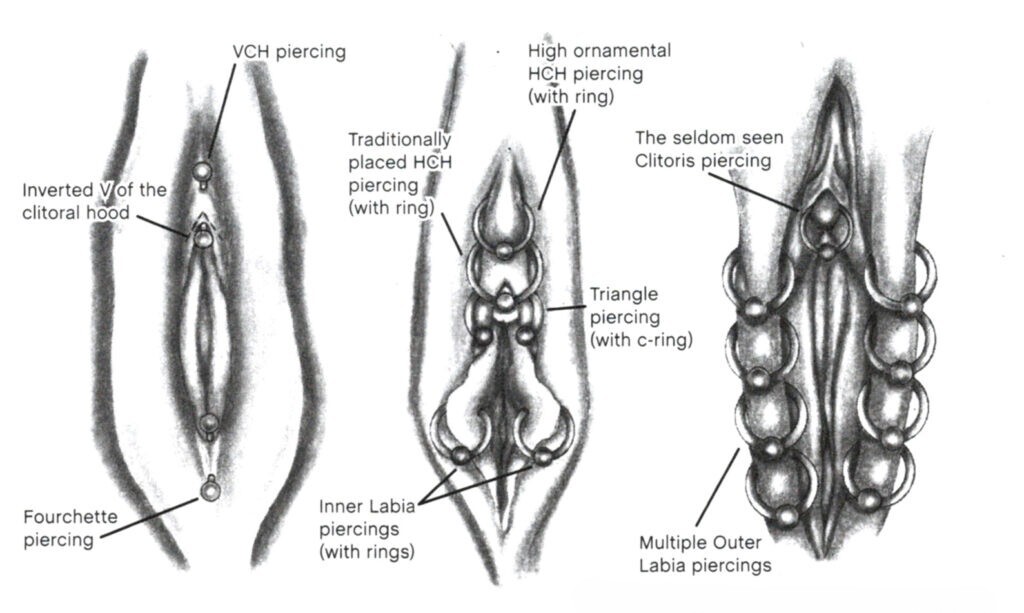In the world of male body piercing, few placements are as well-known, historically significant, or as personally empowering as the Prince Albert, or PA. It is a classic, a legend in the body art community, respected for its clean aesthetic, its surprisingly straightforward healing process, and its unique potential for functional sensation. For many, it is not just a piercing but a profound statement of confidence and a personal celebration of their own body and sexuality.
However, the iconic status of the PA piercing must be matched by an equally high standard of professionalism and technical expertise from the piercer. This is an intimate procedure that takes place in a delicate and vascular area, and there is absolutely no margin for error. At PinkTatPier, we approach this piercing with the clinical precision and deep respect it demands. We recently had a private consultation with a client, David, who was seriously considering a PA piercing London. He had done extensive online research but arrived at our studio feeling understandably nervous, with a list of questions about pain, function, and the long-term realities of wearing the jewellery.
Our lead specialist began the consultation not by discussing the piercing itself, but by creating a calm, confidential, and professional environment. In our private room, they took the time to have a frank and reassuring conversation, addressing every one of David’s concerns. Using clear, clinical anatomical diagrams, they explained the piercing’s precise path through the urethral opening, demystifying the procedure and explaining why it heals so well compared to other piercings. They managed his expectations honestly regarding sensation and discussed the different jewellery styles available for both initial and long-term wear. By the end of the consultation, David’s anxiety had been replaced by a sense of calm and informed confidence. He knew exactly what to expect and felt he was in the hands of a true professional who prioritized his safety and dignity above all else.
This experience is the standard we set. This guide is an extension of that expert-led, confidential dialogue. It is a comprehensive and discreet resource for anyone considering a PA piercing London, covering the essential anatomical details, the specialist procedure, the healing journey, and how to contact London’s best specialist for information on price and cost.

PA piercing
What is a Prince Albert (PA) Piercing? An In-Depth Anatomical Guide
To make an informed decision, it’s essential to understand the precise anatomy of this unique piercing.
The Definition: A Piercing Through the Urethral Opening
A Prince Albert piercing is a circular ring-style piercing. Its path is what makes it unique:
- The Entry Point: The jewellery enters the penis through the urethral opening at the very tip.
- The Channel: The piercing channel is very short, passing directly down through the thin wall of tissue that separates the urethra from the underside of the penis.
- The Exit Point: The jewellery exits on the underside of the penis, in the area where the glans (head) meets the shaft, at the site of the frenum.
The result is a ring where the majority is visible, with one point of the ring emerging directly from the urethra itself.
The “Sweet Spot”: Why This Piercing Heals So Remarkably Well
The primary reason for the PA’s popularity and high success rate is its placement through this specific “sweet spot.” Unlike piercings that must pass through dense muscle or thick cartilage, the PA channel travels through a very thin, highly vascular membrane.
- High Vascularity: The rich blood supply to this area means that the body can deliver healing agents (like oxygen and nutrients) very efficiently, leading to one of the fastest healing times of any piercing.
- Thin Tissue: The short path through thin tissue means there is less trauma during the initial procedure and less tissue for the body to rebuild, further speeding up the healing process.
Critical Anatomical Considerations: Circumcised vs. Uncircumcised
An expert piercer will always assess your individual anatomy.
- For Circumcised Individuals: The procedure is very straightforward, as the piercing site is always exposed.
- For Uncircumcised Individuals: The piercing is absolutely still possible and very common. However, your specialist at PinkTatPier will conduct a careful assessment. We will discuss how the foreskin rests when flaccid and ensure that the chosen jewellery and placement will not cause any pinching or irritation. Sometimes, a slightly different style or size of jewellery is recommended to ensure long-term comfort.
The Unwavering Need for a Specialist
While the PA heals well, this is only true when it is performed correctly. The procedure requires absolute precision, and the consequences of a poorly executed piercing can be significant. This is why you must choose a specialist for your PA piercing London.

PA piercing
Precision is Paramount: Alignment, Depth, and Symmetry
A perfectly performed PA should hang straight and be perfectly centred on the underside of the glans. An expert piercer:
- Ensures Central Alignment: Meticulously marks the exit point to ensure it is perfectly on the midline. A crooked or off-centre PA is an immediate sign of an inexperienced piercer.
- Calculates Correct Depth: Places the exit hole at the correct distance from the tip. Too close, and the piercing can be prone to tearing or the “cheese-cutter effect” over time. Too far back, and it can be uncomfortable and not sit correctly.
Managing Bleeding: A Professional’s Responsibility and a Sign of Expertise
It is a well-known fact that the Prince Albert piercing is prone to more initial bleeding than almost any other common piercing. This is a natural consequence of the area’s rich blood supply. An amateur may be unprepared or alarmed by this.
A true specialist, like our team at PinkTatPier, is completely prepared for this. We are experienced in managing the bleeding efficiently and calmly. We perform the procedure in a clinical environment designed to handle it, and most importantly, we will have already prepared you for this reality during your consultation. Our calm, professional demeanour during this phase is a key part of the safe and reassuring experience we provide.
Our Studio’s Philosophy on Intimate Piercings:
“The Prince Albert is a classic for a reason: it’s an elegant, often functional, and beautifully healing piercing when done correctly. That ‘correctly’ part is everything. It requires a piercer with an unshakable confidence, a deep and respectful understanding of the anatomy, and the ability to maintain a calm, clinical, and reassuring environment for the client at all times. This isn’t just about technical skill; it’s about providing a safe and dignified experience from start to finish. That is the non-negotiable standard we hold for every intimate piercing we perform.” – The Philosophy of the PinkTatPier Team
The Journey: From Private Consultation to a Healed Piercing
Our professional service is designed to be a discreet, respectful, and seamless journey.
The Private Consultation
Your journey begins with a private consultation. In our confidential room, our specialist will perform the anatomical assessment, discuss all aspects of the procedure, healing, and long-term wear, and answer every question you have. This is where we build the trust that is essential for this piercing.
The Piercing Procedure: Swift, Clean, and Professional
The procedure itself is very quick. After the meticulous marking, the piercing is performed with a single-use, sterile needle in one swift, fluid motion. The initial jewellery, typically a captive bead ring (CBR) or a circular barbell made of implant-grade titanium, is inserted immediately. The entire process is handled with clinical precision and a focus on your comfort.
The Healing Timeline: A Rapid Recovery
As mentioned, the PA is one of the fastest-healing piercings. The table below outlines a realistic healing journey.
Table: The Prince Albert (PA) Piercing Healing Timeline & Key Milestones
| Timescale | What to Expect | Key Aftercare & Lifestyle Advice |
| Day 1-7 | Initial bleeding for the first 1-5 days is normal and expected, especially in the morning. Some swelling and tenderness. Urination may be slightly messy or spray for the first few days as you adapt. | Drink plenty of water to dilute your urine and reduce stinging. Clean the piercing with sterile saline solution after urinating and twice a day. You must abstain from all sexual activity. Wear supportive but not tight underwear. |
| Week 2-4 | The initial bleeding and tenderness should have completely stopped. The piercing will start to feel much more comfortable and a part of you. | Continue diligent cleaning, especially after showering. Gentle sexual activity can be resumed if you feel 100% comfortable and a barrier (condom) is used to protect against bacteria. You must clean the piercing immediately afterwards. |
| Week 4-8 | For most individuals, the piercing is fully healed. The internal fistula (tissue channel) is stable and robust. | Book a check-up with your piercer. We can confirm that the piercing is fully healed. At this point, you can discuss and explore different jewellery styles and sizes with your specialist. |
Long-Term Considerations: Urination and Stretching
- Urination: One of the long-term changes with a PA is that urine will now exit from both the urethra and the piercing hole. Many wearers find they need to sit down to urinate to avoid messiness, especially when wearing ring-style jewellery.
- Stretching: The tissue of a PA piercing is very elastic, making it one of the easiest and most popular piercings to stretch to larger gauges over time.1 This is a journey that should be undertaken slowly and with the guidance of your professional piercer.

PA piercing
Price and Cost of a Specialist PA Piercing in London
A PA piercing London is an advanced intimate procedure, and our pricing reflects the high level of skill, the clinical environment, the private nature of the appointment, and the high-quality initial jewellery required.
The final price and cost will be provided to you during your confidential consultation. The fee for our professional service is comprehensive, covering the in-depth consultation, the meticulous piercing procedure, and an implant-grade titanium captive bead ring or circular barbell.
To begin this conversation, we invite you to Contact London’s Best Specialist at our studio.
Your 5 Most Important Questions Answered (FAQ)
1. How much does a PA piercing hurt, honestly?
Pain is subjective, but most clients are pleasantly surprised. The piercing passes through a very thin membrane, so the sensation is a very quick, sharp, and intense pinch that is over in a second. Most people rate the pain as significantly less than a cartilage piercing. The subsequent tenderness is mild and manageable.
2. How much will it actually bleed?
You should expect to bleed. Due to the vascular nature of the area, bleeding for 1-5 days is normal and a sign of a healthy piercing. The bleeding is typically not a gush, but a steady drip that is easily managed with a sanitary pad or gauze in your underwear. Our specialists will give you comprehensive instructions on how to manage this.
3. Will it affect my partner during sexual activity?
This is a very common question. Once healed, many partners (both male and female) report that they enjoy the added sensation from the presence of the jewellery. However, communication is key. The initial experiences should be gentle as both you and your partner adapt to the new sensation.
4. Will I have to sit down to pee forever?
Many, but not all, wearers find it easier and cleaner to sit down to urinate. This depends heavily on the individual’s anatomy and the size/style of the ring they are wearing. Some find they can simply use a finger to plug the piercing hole while urinating standing up. It is an adjustment you will learn to manage.
5. What are the main risks if a PA piercing is done wrong?
The biggest risks from an amateur piercer are: 1) Crooked or off-centre placement, which is aesthetically displeasing and can cause discomfort. 2) Piercing too far back, which can prolong healing and be uncomfortable. 3) Using low-quality or incorrect jewellery, which can lead to infection or the “cheese-cutter effect” where the thin jewellery slowly tears through the tissue.

PA piercing
Conclusion: An Iconic Piercing That Demands a Professional
The Prince Albert is an iconic, rewarding, and empowering piercing with a rich history. Its reputation for being a relatively easy piercing to get and heal is entirely conditional on one factor: it must be performed by a true specialist who offers a professional, discreet, and technically flawless service. By choosing an expert, you are investing in your safety, your comfort, and a beautiful result that you will cherish for years to come.
Your Next Step: Begin with a Private, Expert Consultation
If you are ready to explore this classic and empowering piercing, the first step is a confidential conversation with an expert you can trust.
We invite you to Contact London’s best specialists at PinkTatPier. Schedule your private consultation today to receive detailed information on the procedure, aftercare, and the final price and cost for this exceptional service.

